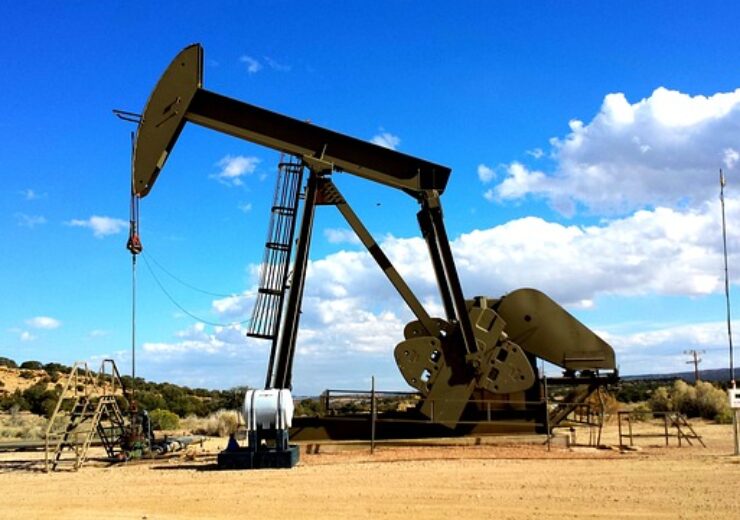The compositional analysis confirms high quality natural gas containing minimal impurities (less than 2% CO2 and nil H2S) which will require minimal processing to prepare for sale to customers

Invictus Energy confirms rich gas-condensate discovery and oil potential. (Credit: John R Perry from Pixabay)
Invictus Energy Limited (“Invictus” or “the Company”), is pleased to provide an update on its 80% owned and operated Cabora Bassa project in Zimbabwe.
Comments from Managing Director, Mr Scott Macmillan
“We are extremely pleased with the results from the additional downhole reservoir fluid sample analysis which confirms a substantial rich gas-condensate discovery at Mukuyu and set up the company for continued success in Mukuyu and the Upper and Lower Angwa geological trend.
“The samples demonstrate a consistent, high-quality natural gas composition, with low inert content, less than 2% CO2 and nil H2S, which will require minimal processing for sale.
“In addition to gas-condensate proven in the Upper and Lower Angwa formations, we have further evidence of the presence of light oil in the Upper Angwa and potentially Dande formation from multiple hydrocarbon source rocks and charge events.
“The hydrocarbons present in the Mukuyu gas-condensate field appear from initial analyses to have been generated and expelled from both local source rock intervals within the massive Mukuyu structure and also migrated from other source rock rich areas off-structure. These results auger well for the presence of hydrocarbons in the prospects and leads in the remainder of the Company’s acreage which has been de-risked by the Mukuyu gas-condensate discovery.
“The gas-condensate composition results are exceptionally positive and exceeded our pre-drill expectations with high-quality, liquids-rich gas with low inerts found in both Mukuyu wells which will allow us to target a low-cost early monetisation development with minimal processing of the gas at surface from the Mukuyu field.”
Additional Mukuyu-2 downhole sample analysis confirms rich gas-condensate discovery and light oil charge presence
Following the two gas discoveries from the Upper and Lower Angwa reservoirs in the recently completed Mukuyu-2 / ST1 drilling campaign (refer ASX announcement 15 December 2023) and the compositional analysis from fast-tracked downhole reservoir fluid samples (refer ASX announcement 04 March 2024), the analysis of additional downhole fluid samples has confirmed a rich gas-condensate discovery in Mukuyu and presence of light oil.
The compositional analysis confirms high quality natural gas containing minimal impurities (less than 2% CO2 and nil H2S) which will require minimal processing to prepare for sale to customers.
Condensate gas ratios (CGR) are estimated between 10-25 barrels per million standard cubic foot (bbl/MMscf) of gas across the Mukuyu-2 samples with a lab estimated condensate API gravity of 50-60°.
The compositional analysis of the flashed liquid component (condensate/light oil) from the shallowest fluid samples in the Upper Angwa shows evidence of biodegradation of a previous early light oil charge which likely occurred when the Mukuyu structure was uplifted to a shallower depth at the Mukuyu-2 location enabling biodegradation of the oil in the reservoir, before subsequent reburial to its present depth with a later gas-condensate charge.
Additional geochemistry analysis is being performed on these reservoir samples to confirm this, and assess the likelihood of liquids remigration and accumulation in other parts of the structure, including into the shallower sequences.
The results confirm the potential for light oil from more oil-prone source rock in Mukuyu , which may be retained in structural locations within the oil window in the Upper Angwa (as per Mukuyu-1 interpretation) or may have migrated to shallower formations such as the Dande.
Preliminary analysis of the mudgas isotopes in the Dande formation suggests a biogenic gas component . Additional analysis of the mudgas and isotope data is ongoing to determine the potential sources of hydrocarbon charge for the Dande formation which will be integrated into the evalutaion of Dande Formation prospects and leads along the southern basin margin and in the east of the area where the recently acquired and processed CB23 2D seismic dataset is providing new insights.
Preliminary results suggest the source of the hydrocarbons recovered from Mukuyu-2 is very similar to the reservoir extract from Mukuyu-1, which indicated both gas and liquid-prone source rocks (coals and interbedded lacustrine sequences) are present over the sizeable fetch area within and beyond the Mukuyu structure. These results further support the Company’s geological modelling showing multiple hydrocarbon charge events from multiple source rocks with increasing liquid hydrocarbon content south towards Basin Margin and increasing dry gas contribution from a deeper kitchen and higher maturity source rocks to the north of Mukuyu structure.
The presence of migrated hydrocarbons from off-structure is extremely positive for the overall hydrocarbon charge, migration and reservoir connectivity in Mukuyu.
Additional analysis of the reservoir hydrocarbon and source rock samples will provide further insights to hydrocarbon-source rock correlation, and will allow for hydrocarbon charge modelling to the shallow plays in the Pebbly Arkose and Dande formations, calibrated by the mudgas data. These will be evaluated for potential testing elsewhere on the Mukuyu structure and in other prospects within the portfolio.
The results to date provide significant insight into the Cabora Bassa basin geological history and confirmation of the accurate modelling conducted by the Company in the lead up to the Mukuyu discovery. The results also provide a calibration of the basin model to apply to the prospect and lead portfolio which the Company is currently refreshing in preparation for the selection of future exploration well locations.
Source: Company Press Release
